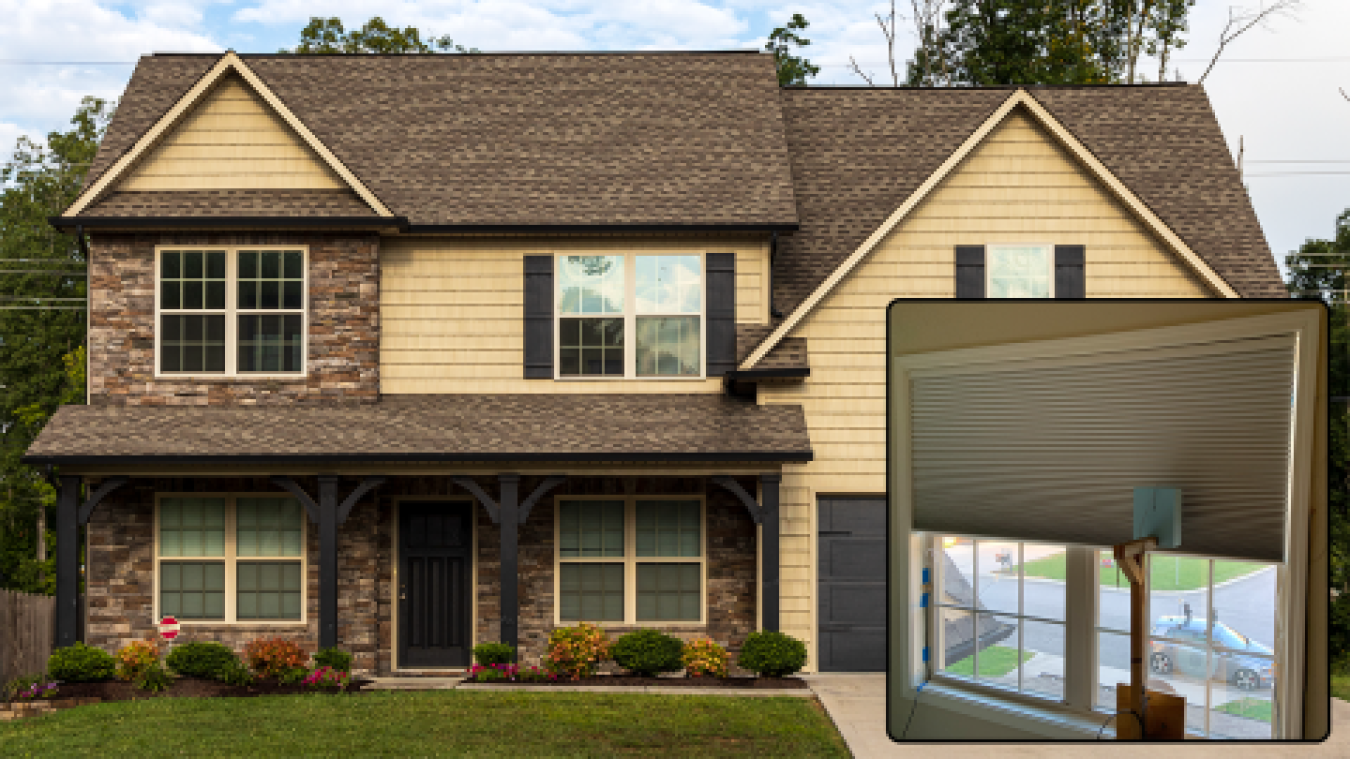DOE research demonstrates that window attachments like insulating cellular window shades are affordable options to save significant amounts of energy in buildings, make them more comfortable, and improve their resiliency amid disruptions.
April 20, 2023
U.S. Department of Energy (DOE) research demonstrates that window attachments like insulating cellular window shades are affordable options to save significant amounts of energy in buildings, make them more comfortable, and improve their resiliency amid disruptions. Now, Minnesota has become the first state in the country to formally recognize this by adding Attachments Energy Rating Council (AERC)-certified cellular window shades to their Technical Reference Manual (TRM). TRMs help states plan, evaluate, and implement their energy-efficiency programs. To help Minnesota determine how much energy consumers could expect to save with AERC-certified cellular windows shades, AERC (an independent evaluator of window attachment performance established with DOE support) used DOE’s data and technical support to demonstrate that cellular window shades are viable options worthy of inclusion in Minnesota’s TRM.
“This is a huge accomplishment, as AERC’s members and national lab staff worked with the Minnesota TRM working group for over four years to demonstrate the effectiveness of cellular shades as a viable, appropriate energy-efficiency option in a TRM,” said Marc LaFrance, BTO’s technology manager for windows.
AERC’s ratings help consumers and utilities select and specify window attachments that guarantee savings in their climate zone, which reduces wasted energy in buildings. Americans spend over $400 billion annually to power and otherwise energize the nation’s 130 million homes, offices, schools, hospitals, and other commercial and residential buildings. Moreover, it is estimated that one-third or more of the energy used by buildings is wasted, and with it as much as $150 billion annually. Previous studies at DOE’s Oak Ridge National Laboratory (ORNL) have shown that cellular shades can reduce heating energy needs by almost 25% and “up to 3 million tons of carbon dioxide, assuming a 20% penetration rate of cellular shades in residential buildings [nationally],” said Dr. Mahabir Bhandari at ORNL’s Building Envelope & Urban Systems Research Group.
Buildings in the Midwest face challenging climates, which are characterized by large temperature swings between hot summers (sometimes as high as 100°F in Minneapolis-St. Paul) and subzero winters (sometimes as low as -46°F in Minneapolis-St. Paul). Designing, constructing, and operating buildings to withstand these conditions is complicated, as building systems must carefully balance the opposing needs of each season. Architects must either minimize wall openings for windows–which reduces occupant comfort and minimizes ventilation and daylighting–or they must install more expensive, high-performance windows with additional wall insulation to improve the buildings’ thermal performance. And while windows are essential elements of most buildings, they are among the most energy-wasting parts of a home. Windows only constitute about 10% of a typical home’s surface area, but they can account for 30-40% of a home’s heat loss in winter. Needless to say, addressing wasted energy from heat losses and gains through windows is crucial to improve building performance easily and affordably.
To include AERC-certified cellular shades in Minnesota’s TRM, building science experts at multiple national labs worked with AERC. Pacific Northwest National Lab (PNNL) and Lawrence Berkeley National Lab (LBNL) supported the Minnesota TRM process by performing technical analysis to provide modeling-specific data using AERCalc software, while ORNL conducted field studies to validate the shades’ energy-saving value in buildings.
“This measure has been field tested in PNNL’s Lab Homes and is complimentary to all the HVAC efficiency and electrification efforts taking place, which also works with high-R windows, new and existing homes, and smart homes,” said Katherine Cort, senior economist and project manager at PNNL.
This input from DOE’s national labs helped Minnesota conclude that cellular window coverings insulate windows greatly to help optimize solar gains to the space while reducing heat loss through the buildings’ envelope. Cost-effective retrofit packages that improve the buildings’ thermal performance in Minnesota may now include high-efficiency window coverings, such as AERC-certified shades that are energy-rated and certified to have Warm Climate Rating of at least 36 and Cool Climate Rating of at least 9.
By emphasizing energy-efficient buildings and retrofit measures that include installation of energy-efficient and automated shading to new and older buildings, Minnesotans can enjoy lower heating and cooling costs, keeping indoor temperatures under control and improving occupant comfort. AERC plans to continue working with utilities in Minnesota to implement incentive programs, and the entire team hopes to expand the program’s reach into other parts of the country.

